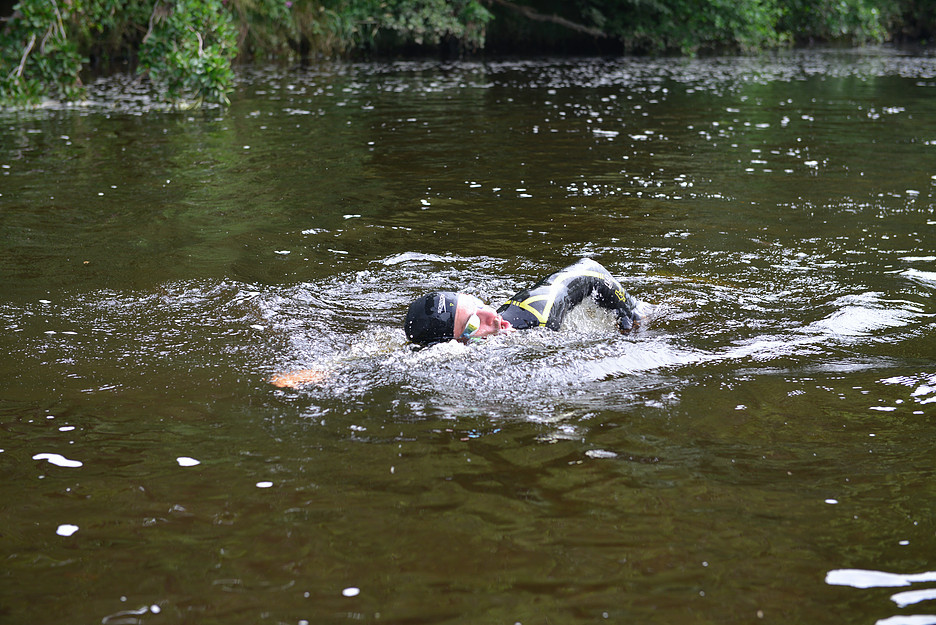We woke early the next morning and took it in turns to wash in the sink and brush our teeth. Calum had been talking about this BBC documentary: The Merthyr Mermaid. It was a tradition of ours to always watch something that psyched us up in the early hours. Before our swims in Norway, we huddled round footage of Lewis Pugh at the North Pole. On this day, June 23, we sat under the apartment TV, affixed to the wall. We said nothing and watched from the ends of our beds as Welsh ice swimmer, Cath Pendleton, trained for her Zero Ice Mile in Antarctica.
Cath was one of those physical anomalies – a woman in her fifties so durable and stubborn in water it looked like she would never stop. At the same time, she is an ordinary Welsh woman from the small town of Sennybridge. A former police officer, who also served in the RAF and only started ice swimming in 2015. She swam her first Ice Mile the following year (first woman from Wales to do it) and went on to represent Team GB at the 2019 World Ice Swimming Championships in wintry Murmansk, Russia. The film is deeply inspiring. It takes you right from this backwater town to the Southern Ocean, where Cath crawls over a mile at 0.03C in the broad, ice-sailed waters of Hanusse Bay, Antarctica. The crew even had to time the swim around sightings of leopard seals and orcas.
In the build-up to the Ice Mile, Cath was coached by Irish ice swimmer, Ger ‘Dr Ice’ Kennedy, from a county town south of Dublin. She also relied on her supportive husband, often seen on frosted banks with an armful of dry clothes and towels. He was there when Cath walked out after each swim and came over with a big grin and went right by him to the car, trailing a cape of steam.
Finally, we got up and pulled on our fresh Messina tees. Calum laid out everything he needed on his bed: GoPro, goggles, cap, ear plugs, sun cream, banana, a few euros and flip-flops. That was more than just the essentials. I had the same kit stowed in my bag – minus the sun cream, which I’m sure I regretted later. Robbie had an additional two rash vests packed in case he felt the cold at all. In the past he swam for almost 3 hours in the 9C waters of the Lofoten Islands (wearing a wetsuit). Yet a few bad experiences since then had knocked his confidence.
The plan was also to film as much of the crossing as we could. Calum had perfected the knack for swimming with one hand, catching swimmers as they passed in a flurry of bubbles. Otherwise he swam with the GoPro stuffed in his jammers. We joked that he had to be sure he filmed the right part – no one wanted to get the footage back and find it was a 30-minute smushed Johnson shot, with no Messina swimming whatsoever.
At the beach, a group had formed under the huge pylon. Everyone talked excitedly and pointed out our route across the strait. You could feel the unease that rippled between us. I never believe anyone who says they’re not nervous. You have to relish it, of course – only there’s so much more to it than that.
One of the Turkish swimmers came over as we bent down and cleaned our goggles in the rollers. He had these thick shoulders you only get from years of pawing water. You could’ve guessed he was about to lead us across the strait, with Lisa at his side.
“We swim to Italy mainland,” he said, tracing his finger over the Italian peninsula, “So, that’s a lifetime experience.”
There were murmurs in our group as we all stepped into the shallows. The distance was set out ahead of us. At water level it always look further than it is. You can’t help feeling some nerves the first time you step into the sea. There’s a visceral sense of place – at once it feels like somewhere you don’t belong, but you know those thoughts are fleeting. You’ll feel at home out there once your mind has cleared.
The pilot signalled the first group in green caps. They all set out into the corridor of small boats and sank out of sight for a second. Then their arms swung upwards and elbows punched the sunlight. Feet kicked riffles that trailed and striped the surface.
“Get in,” said Rob, peeling his goggles down.
“You ready?” I said, wading down the slope of sand and broken shells.
We were up next in our orange caps.
“Hang on Jack,” said Calum.
A cry of “andare” erupted from the boat.
“Is that the Italian for ‘go’?” Calum asked.
We all looked at each other. Even Alle seemed confused.
Again, there was a cry from our pilot. Louder this time, and in English – “Go.”
All of us dove forward and set off in a frenzied line. Adrenaline spiked as we threw our arms out and sighted over the little waves. It was just the four of us in our orange-capped group. When I sucked in air I could see the others on both sides. Small boats moved into position behind them. Slowly they guided us out into deeper waters. Below the surface the seabed was alight in the morning sun. Rays caught on ridges of sand and sliced into the murk. While we were suspended several metres up. You could see our shadows in the light below. Our strokes slunk over patches of pebble and sand. Bubbling wakes trailed behind us as feet padded the unbroken blue. Little fish darted to dodge our charge.
















